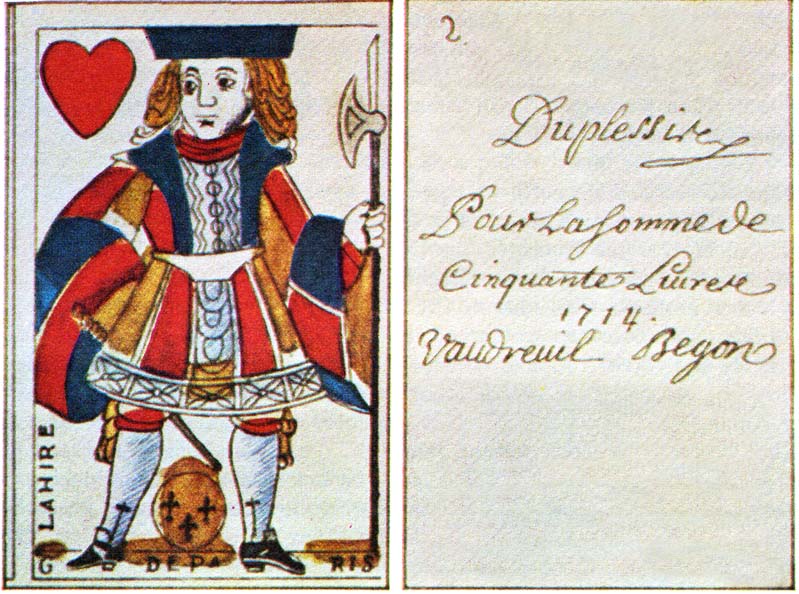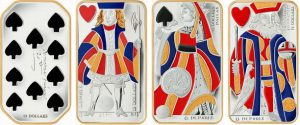On today’s date in 1729, King Louis XV authorized a new issue of playing card money in response to a currency shortage in the French colony of New France.
In 1685, colonial authorities in New France found themselves short of funds after a mismanaged military expedition against the Iroquois, who were allies of the English. Tax revenues were also on a downward trend owing to the curtailment of the beaver trade.
Card money was issued until the fall of New France in 1760; however, unlike the cards issued between 1685 and 1714, the 1729 issue was printed on ordinary white cardboard, the size of which determined the denomination.
Notes were made on the card’s reverse, authorizing its use as a temporary form of currency until a new shipment could arrive, at which point the cards would be redeemed for real specie. Depending upon the value of the card, it would sometimes be cut in halves or quarters to denominate six, 12 or 24 livres, which was France’s currency until the late 18th century.
CANADIAN MINT COMMEMORATION
Beginning in 2008, the Royal Canadian Mint commemorated the history of playing card money with a set of four coins, each featuring a unique rectangular shape that combined colour and selective gold plating for the first time in Mint history.
Four pieces make up this set: the Jack of Hearts (2008), Queen of Spades (2008), Ten of Spades (2009) and King of Hearts (2009).


